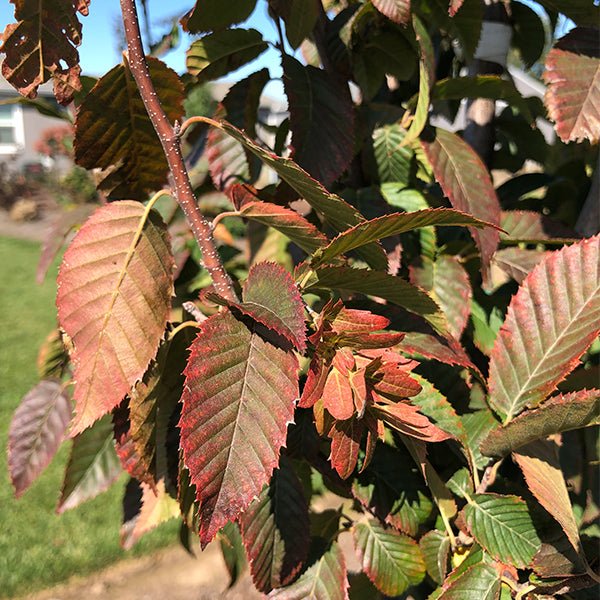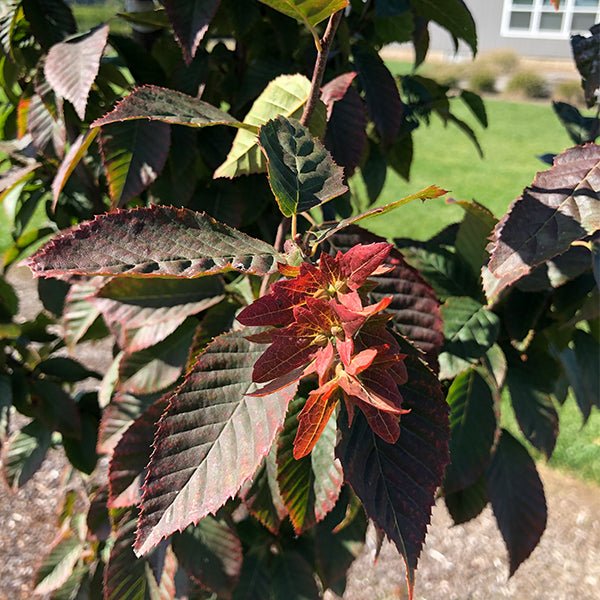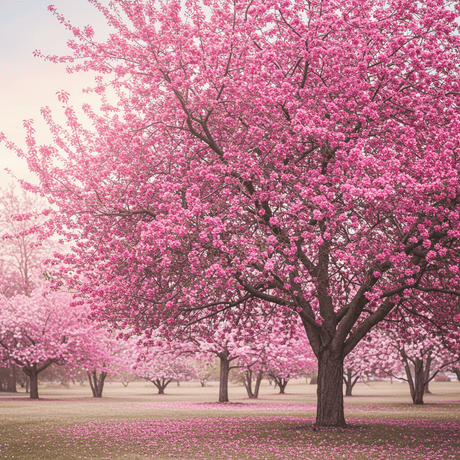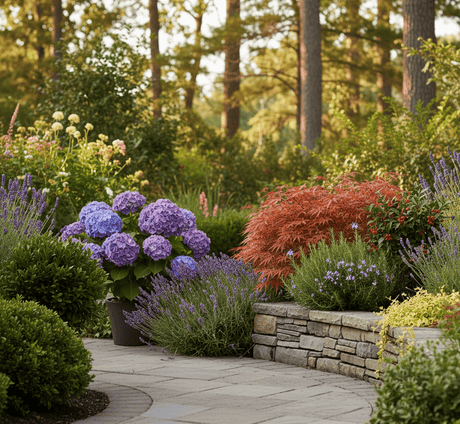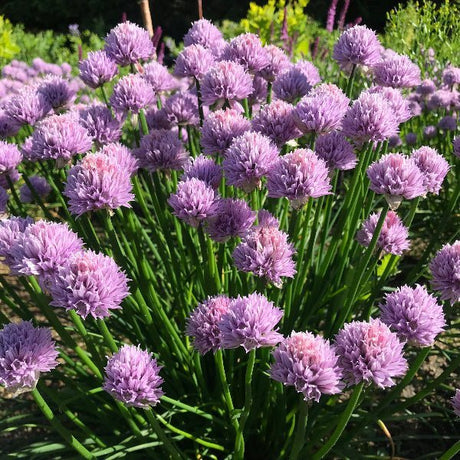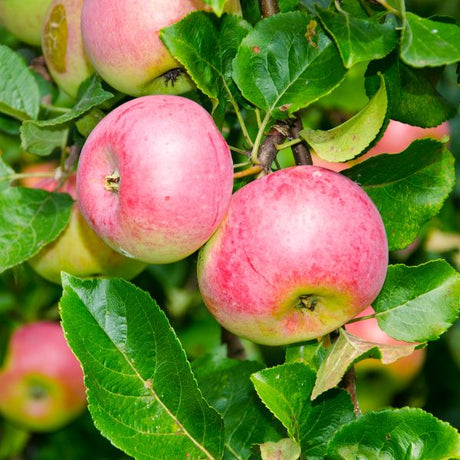American Hornbeam
Carpinus caroliniana
Plant Sentry™
Plant Sentry™

Plant Sentry™ Protected
Your order is protected by our compliance system that:
- Prevents restricted plants from shipping to your state
- Ensures plants meet your state's agricultural requirements
- Protects gardens from invasive pests and diseases
Delivery and Shipping
Delivery and Shipping
Delivery and Shipping
Fast, Safe Plant Delivery
Ships in 3-4 business days • Tracking provided • Weather protected
| Under $50 | $9.99 |
| $50 - $99.99 | $14.99 |
| $100 - $149.99 | $16.99 |
| $150 - $198.99 | $24.99 |
| $199+ | FREE |
✓ Zone-specific timing • ✓ Professional packaging • ✓ Health guarantee
Understanding Plant Options
Nature Hills offers plants in two main formats:
- Container Plants: Grown in pots with soil, sized by container volume and plant age
- Bare Root Plants: Dormant plants without soil, sized by height measurements
Container Plant Sizes
Container sizes indicate plant age and growing capacity rather than liquid volume equivalents. Our containers follow industry-standard nursery "trade gallon" specifications, which differ from standard liquid gallon measurements.
Young Plants (6 months to 18 months old)
| Container Size | Actual Volume | Metric Equivalent |
|---|---|---|
| 2" x 2" x 3" | 0.18 - 0.21 dry quarts | 0.20 - 0.23 dry liters |
| 4" Container | 0.31 - 0.87 dry quarts | 0.35 - 0.96 dry liters |
| 4.5" Container | 0.65 dry quarts | 0.72 dry liters |
| 6" Container | 1.4 dry quarts | 1.59 dry liters |
| 1 Quart | 1 dry quart | 1.1 dry liters |
| 5.5" Container | 1.89 dry quarts | 2.08 dry liters |
Established Plants (18 months to 2.5 years old)
| Container Size | Actual Volume | Metric Equivalent |
|---|---|---|
| 2 Quart | 2 dry quarts | 2.2 dry liters |
| #1 Container | 2.26 - 3.73 dry quarts | 2.49 - 4.11 dry liters |
| 5" x 5" x 12" | 3.5 - 4.3 dry quarts | 3.85 - 4.74 dry liters |
Mature Plants (2-4 years old)
| Container Size | Actual Volume | Metric Equivalent |
|---|---|---|
| #2 Container | 1.19 - 1.76 dry gallons | 5.24 - 7.75 dry liters |
| #3 Container | 2.15 - 2.76 dry gallons | 8.14 - 12.16 dry liters |
Large Plants (3-5 years old)
| Container Size | Actual Volume | Metric Equivalent |
|---|---|---|
| #5 Container | 2.92 - 4.62 dry gallons | 12.86 - 20.35 dry liters |
| #6 Container | 5.25 - 6.01 dry gallons | 23.12 - 26.42 dry liters |
| #7 Container | 5.98 - 6.53 dry gallons | 26.34 - 28.76 dry liters |
Bare Root Plants
Bare root plants are sold by height from the root system to the top of the plant. Plants may exceed minimum height requirements.
Common Sizes:
- Trees: 1 foot, 2 feet, 3 feet, 4 feet, 5 feet, 6 feet
- Shrubs & Perennials: 1 foot, 18 inches, 2 feet
Important Notes
Container Volume Specifications
- Trade Gallon Standard: Our containers follow industry-standard "trade gallon" specifications established by the American National Standards Institute (ANSI Z60.1) for nursery stock
- Volume Variations: Actual soil volume may vary due to plant root systems and growing medium settlement
- Age Indicators: Container size primarily indicates plant age and maturity rather than liquid volume equivalents
Growing Conditions
- Plant size can vary based on variety and growing conditions
- Container size helps indicate plant maturity and establishment level
- Larger containers generally mean more established root systems and faster landscape establishment
Seasonal Availability
- Bare root plants are available seasonally when dormant
- Container plants are available throughout the growing season
- Specific varieties may have limited availability in certain sizes
Questions?
For questions about specific plant sizes or availability, please contact our plant experts who can help you choose the right size for your landscape needs.

Plant Sentry™ Protected
Your order is protected by our compliance system that:
- Prevents restricted plants from shipping to your state
- Ensures plants meet your state's agricultural requirements
- Protects gardens from invasive pests and diseases
Plant Profile & Growing Essentials
Cold hardy, Native, Fall Color/Interest, Clay Tolerant, Wet Soils, Thornless, and Hedge/Screen
Specifications
Specifications
-
Botanical Name
-
Height
-
Width
-
Growing Zones
-
Growth RateSlow
-
Leaf Color
-
Fall Color
-
NativeYes
-
Pollinator FriendlyYes
-
Pollinator Required
-
Bloom PeriodLate Spring
-
Does Not Ship ToAL, AK, AZ, AR, CA, CO, HI, ID, KS, LA, MS, MT, NV, NM, ND, OK, OR, SC, SD, TX, WA
Planting & Care Instructions
Planting & Care Instructions
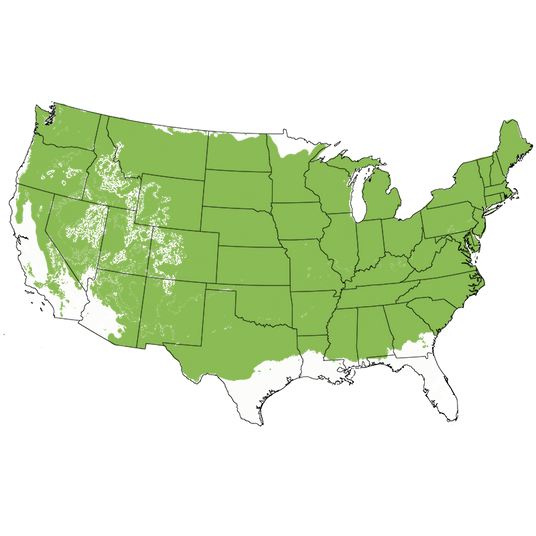
Growing Zones 4-8
Colorful, Well-Knit Native American Hornbeam
- Underutilized Understory Tree
- Full to Partial Shade or Full Sun
- Magical Display as Leaves Unfurl Purple-Red in Spring
- Incredible Fall Colors Include Red, Yellow and Orange
- Unique Leaves Feature Corrugated Texture and Double-Toothed Margins
- Lovely, Rounded Canopy
- Blue-Gray Bark Develops Marvelous Flaring Character in Time
- Muscular Trunk Brings Winter Interest
- Nicknamed "Ironwood" and "Musclewood"
- Excellent Wildlife Tree
- Very Strong and Heavy Wood with Tight Grain and Slight Twist
- Great for Turned Bowls, Heavy-Duty Wedges, Golf Clubs and Tool Handles
- Can Be Coppiced for Firewood in Managed Timber Stand
- Extraordinarily Hardy
Stand out from the crowd with a phenomenal small native tree. The local wildlife, from caterpillars to bobwhite quail, will thank you.
A perfect gift for the aspiring woodworker and nature lover in your family, American Hornbeam (Carpinus caroliniana) is a healthy, satisfying tree that fits perfectly into modern lots.
The sinuous trunk swells with life, and lives up to its nickname...Musclewood.
This is a thoughtful native tree to contemplate in every season. Allow it to grace your landscape, and you'll grow to appreciate its lyrical form.
Bold, purple-red foliage bursts forth in spring; snapping open their textured leaves like a Southern Belle's hand fan. The handsome leaves grow to display prominent veining along a strong midrib with noticeable double-toothed margins; maturing to green.
You'll add an excellent butterfly resource tree with this choice, as the leaves are a larval host for many species. Scientists estimate there are well over 65 types of butterflies who rely on these sinewy trees.
Like its Birch cousins, male and female catkins hang in early spring. Once the tree reaches maturity if it receives enough sunlight, it can start a periodic mast cycle every few years.
Nutlets are held in lobed bracts to provide a feast for many animals, along with the annual buds. These mid-size trees augment an Oak and Beech food forest beautifully.
This is a beautiful fall color tree, as well. The showy display spans the gamut from fiery yellow-orange to bright red once the nights start getting cooler.
Even the smooth gray, bulging bark of these shade-tolerant trees become a habitat for beautiful silvery-green lichen. Hornbeam looks ethereal in wintertime with a light cover of snow or frost.
The wood can handle extreme applications, ranking at 1780 pounds-force on the Janka hardness scale. It's also beautifully tight-grained and pale white, with finished products compared to ivory.
When mature, the shape can range from rounded to a broader, elliptical form. Its biggest benefit is its surprising shade tolerance — it will thrive, even under the canopy of other trees — but will be happiest in partial shade.
This is a spectacular choice for conscientious people across the country. Enjoy one of our most incredible small native trees, order American Hornbeam today!
How to Use American Hornbeam in the Landscape
These trees are especially welcome in a yard shaded by taller trees. Use one anywhere in a small yard to develop into a virile specimen without regard to sunlight conditions.
Add several for a grand-looking grove. Space them from 10 to 25 feet apart from trunk to trunk; varying the width for a more natural look.
This is a perfect choice to include in windbreaks, as it has supreme resistance to splitting. You'll relish American Hornbeam's fall color.
You'll also attract a variety of birds, including wild turkey, pheasant, and ruffled grouse. On a large property, pair with Red Oak, Chickasaw Plum and Hazelnut bushes as a plentiful resource for many animals.
Add Hornbeam to the edge of Rain Gardens. It loves a spot at the edge of a pond or creek, as well.
#ProPlantTips for Care
American Hornbeam likes wet feet, and is partial to a slightly acid-to-neutral soil pH. However, this versatile tree is adaptable to many soil types.
Plant without regard to sun exposure, unless you want to produce mast for wildlife. Then, it will need an opening in the canopy after a decade or so.
Water a medium amount on a regular basis. This is especially important in the first season, and in times of extended drought.
Apply a three-inch layer of mulch over the root system and spread it to three feet outside the canopy. This helps keep the roots cool and moist.
Prune in late winter to correct form or raise the height of the canopy. Sharpen your chain, and it's best to have a spare on hand.
Site your tree carefully, as it will not tolerate being moved. We ship American Hornbeam at the right size for transplant.
You'll be so pleased by the high quality of our plant material. Gift yourself or a loved one the admirable American Hornbeam. It's an exceptional choice.

